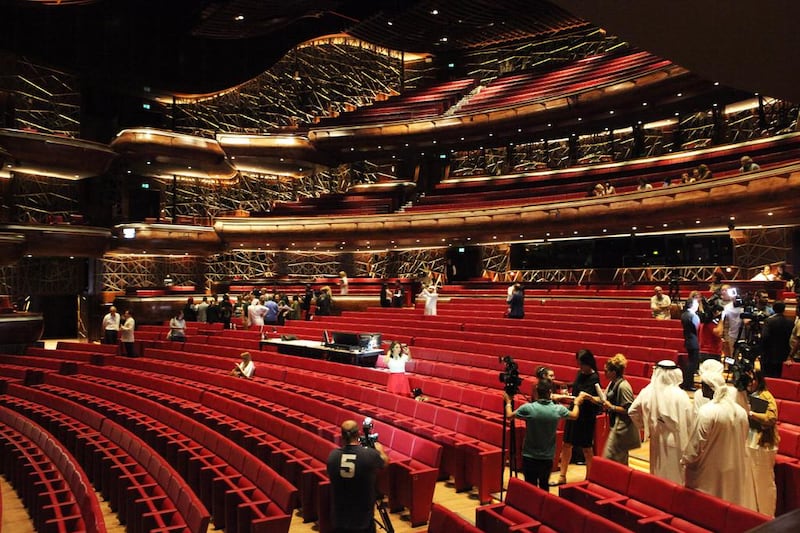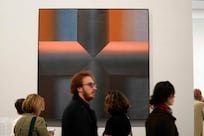For our ancestors in the Arabian Peninsula, poetry and cultural expression were not optional luxuries. Before the advent of cities such as Dubai, Abu Dhabi, Manama and Muscat, the tribal nomads of the desert lived in a part of the world called the Rub’ Al Khali, which translates as the “empty quarter”. For the Bedouin tribes living in this unforgiving landscape where nothing was constant, the recitation of poetry and song evolved into the vital lifeblood keeping alive the identity of the tribes.
With the understanding that the marriage of words and musical recitation has been inextricably linked to the societies of the Arabian Peninsula for millennia, it would seem that the news of an opera house opening in Dubai would be viewed as a natural development for the city. Sadly, it has been reported as anything but that, so I’d like to explore the cultural implications surrounding Dubai Opera’s reception in some western outlets as well as the potential that this opera house might hold.
An article published in The Economist in June takes the bull by the horns with misconception followed by ill-informed assumption. The opening sentence alone is problematic: “Dubai, renowned across the world for its oil wealth, now wants to forge a reputation for the arts”. Apart from the fact that oil accounts for less than one per cent of Dubai’s GDP, there is an assumption that this part of the world is suddenly developing a “reputation for the arts”.
The narrow-minded question put forward in The Economist is regurgitated as “pertinent” by the British musical commentator and critic Norman Lebrecht who sums it up as: “Why are the Arabs building opera houses?”
Astonishingly, when the Kauffman Center for the Performing Arts opened in Kansas City, Missouri in 2011, commentators were not asking the same question. Apparently it didn’t warrant enquiring why Kansas City needed a major performing arts centre but at least two mainstream commentators thought it right to ask why “the Arabs” needed an opera house in Dubai. This is despite the fact that Kansas City is a place where fewer than half a million people live, while Dubai is a city of global significance with a multinational population of more than 2.5m. The question really should be: why did it take this long?
Because opera is a “western” medium? Well, the truth of the matter is the opera is an international art-form, a sort of artistic conglomeration from across the world. But if we’re talking about the “core” repertory that formed the origins of opera in Florence, there is no major opera house in the world that performs exclusively Florentine or Italian repertory. And, by the way, the operas of Verdi were created in Milan, which is 8,000 kilometres away from Kansas City but less than 5,000km from Dubai.
There have always been arguments about the “nationality” of opera, as though music and storytelling ever respected national borders. Those arguments have thankfully been ignored by most artists. Within three decades of the first Italian opera being performed there was contention about whether it was appropriate for the Italian language to appear in German opera houses. The debate as to whether German composers should write operas in their own language or Italian was still somehow alive 200 years later, but we’re lucky that Mozart seemed to have no problem writing works in both languages.
This clash repeated itself in many different countries. Russian composers like Mussorgsky and Tchaikovsky ploughed ahead with the creation of iconic and powerful operas in Russian. And in the United Kingdom, too, the controversial former MP Terry Dicks exclaimed: “Am I to understand that an overweight Italian singing in his own language is part of my heritage?”
Dicks clearly missed out on shows such as Benjamin Britten’s Billy Budd or Peter Grimes. And then, composers in the United States, from George Gershwin to Aaron Copland, seemed perfectly content to ignore the notion that opera was an elite European import. Instead, they chose to explore the ways in which American musical idioms and stories could add to the richness of an increasingly international art-form in works like The Tender Land and Porgy and Bess.
As for how I approach my own operas as a composer, I’m often asked whether I write in a “western” or “eastern” style. The answer is that I attempt to create art in a style that is honest to my experience of the world, which has been transnational. My musical language is cosmopolitan – it is what I know. I value my studies of the western classics with the late Gunther Schuller as much as I value my study of Arabic Maqam with the late Sheikh Habboush. I don’t value one over the other. My score texts of my latest operas are in Arabic, English, Italian, Cantonese, German, Urdu and Latin from among other languages.
So why call it “opera” and why call these theatres, as architecturally diverse as the artworks that they are built to present, “opera houses”?
Opera at its purest is the means to tell a story through music, words, movement, lighting, visual design, acting and singing. These are all part of universal human genius. Though we’ve listed cultural arguments, the reality of the matter is that nobody can claim a monopoly on the human voice, on music or words.
What is notable about Dubai’s new opera house is the diversity of the programming. While so many of the major performing arts centres in the world today seem to rehash endless productions of the same works from largely one continent (Europe) and largely one period (roughly 1750 to 1900), Dubai Opera is presenting the Arabic songs of Emirati Hussein Al Jassimi, Anoushka Shankar’s classical Indian compositions, a classic American musical by Leonard Bernstein (West Side Story), 19th century French and Italian operas and a Flamenco ballet in the first few months.
To be sure, it is too early to tell the path that Dubai Opera will chart and whether or not it will be successful. But it is notable because it might hold a key as to what the 21st century opera house might look like.
In July, the speaker of the United States house of representatives, Paul Ryan, posted a selfie with a group of Capitol Hill interns that immediately sparked comments on the lack of diversity in the photo. In response, Eddie Bernice Johnson, a Democrat from Texas, posted a photo showing a significantly more diverse group of Democratic interns. The two images are not only a commentary on disparity in diversity, they speak to one of the choices of our time: clinging to the sequestered past or moving forward towards an inevitably integrated future.
All institutions, from artistic presenters to political parties, that want to thrive today must acknowledge and reflect what the world looks like today. Great artists have constantly cut to the core of the human experience in profound ways. So perhaps art has to reflect the way that humanity actually looks to survive.
The fact that so many of our performing arts organisations approach the classics from an exclusively western and, even more often, exclusively western European point of view is not only offensive, it is self-defeating. Beyond ensuring a slow and steady path to extinction for the institutions themselves, it also robs their intended audiences of the learning and richness of the vast majority of the world's eternal treasures.
Mohammed Fairouz is an Emirati-American composer





